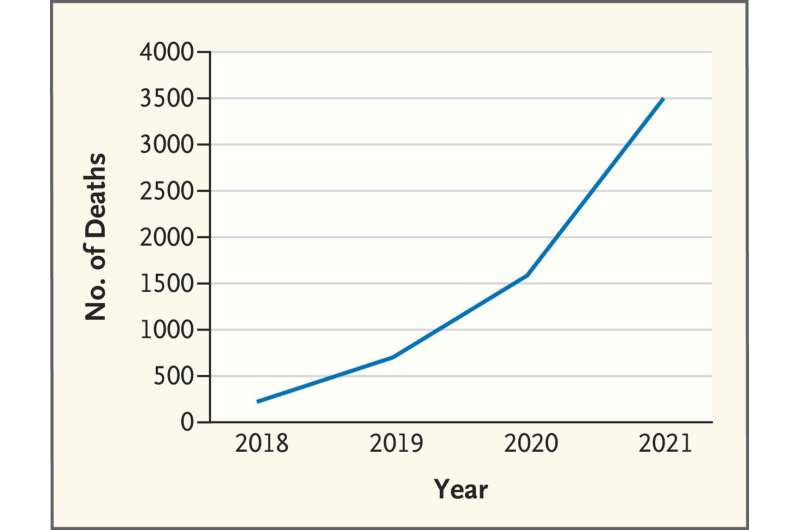This article has been reviewed according to Science X's editorial process and policies. Editors have highlighted the following attributes while ensuring the content's credibility:
fact-checked
peer-reviewed publication
trusted source
proofread
Analyzing the new US plan to target xylazine-laced fentanyl

The lethal mixture of xylazine and fentanyl, also known as Tranq dope, may sound unfamiliar to many, but its impact is harming people who use drugs nationwide.
Xylazine, approved by the U.S. Food and Drug Administration for veterinary use as a sedative, has become a major component in the illicit drug trade. When consumed by humans, xylazine causes sedation, leading to profound health risks ranging from difficulty breathing to dangerously low blood pressure and even death, according to the Centers for Disease Control and Prevention (CDC).
Leonard Davis Institute of Health Economics (LDI) senior fellow Michael Ashburn, along with Rahul Gupta, the director of the White House Office of National Drug Control Policy (ONDCP), and David R. Holtgrave of ONDCP and Johns Hopkins University, provided insight to the White House on the emerging threat of xylazine. The work was published in the New England Journal of Medicine.
Ashburn, Holtgrave, and LDI senior fellow Margaret Lowenstein discuss the federal government's plan, which involves six action areas, including testing; data collection; evidence-based prevention, harm reduction, and treatment; supply reduction; scheduling; and research.
Ashburn and Holtgrave say there is an urgent need to develop and implement evidence-based guidelines for the treatment of xylazine withdrawal. Several institutions have published their own organizational guidelines, Ashburn and Holtgrave say, which need to be rapidly shared and outcome data collected and used to update the guidelines.
Lowenstein adds, "Xylazine is the latest in a series of evolving threats that have emerged in our drug supply. We need to think holistically, integrating surveillance and rapid dissemination about harm reduction and treatment as new substances emerge.
"In Philadelphia, most fentanyl is contaminated with xylazine, and many people who use drugs know that, but there is little they can do to control it. We need to better understand strategies to reduce xylazine's harms as well as couple xylazine strategies with those for opioid use and substance use in general."
"Also, since law enforcement strategies have been largely unsuccessful in curtailing drug use or impacting public health, it seems unlikely that policing will have a significant impact. We also need better care delivery models for xylazine complications—especially wounds—along with substance use."
More information: Rahul Gupta et al, Xylazine—Medical and Public Health Imperatives, New England Journal of Medicine (2023). DOI: 10.1056/NEJMp2303120




















